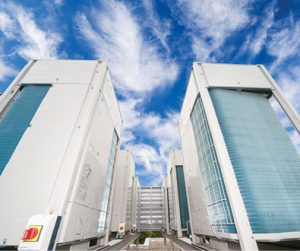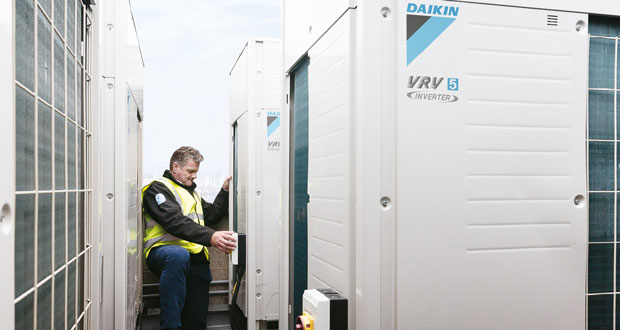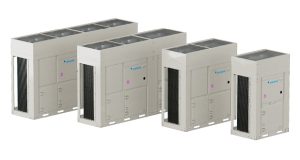 Matteo Dall’Ombra, National Specification Manager from Daikin on the key developments in HVAC legislation facilities managers need to consider
Matteo Dall’Ombra, National Specification Manager from Daikin on the key developments in HVAC legislation facilities managers need to consider
Decarbonising the built environment is critical to achieving global climate goals and heating, ventilation and air conditioning (HVAC) systems have a significant role to play in this effort. Recent legislative updates, like BREEAM Version 7, the UK Net Zero Carbon Buildings Standard and changes to the F-Gas regulations, reflect a growing push to reduce emissions in large buildings.
With buildings and construction accounting for approximately 40 per cent of global greenhouse gas emissions, decarbonising the built environment represents one of the most significant opportunities for meaningful carbon reduction. A substantial portion of these emissions stem from the energy consumed for heating, cooling, lighting, and daily building operations, making HVAC systems a crucial focus for sustainability improvements.
The UK’s commitment to reaching net zero by 2050 has established an ambitious timeline that requires immediate and coordinated action across all industries. For facilities managers overseeing large commercial buildings, understanding the evolving regulatory landscape is becoming increasingly important to future-proof their properties and operations.
EU F-GAS REGULATION
One of the most pressing challenges facing the HVAC industry is the phasedown of hydrofluorocarbons (HFCs). These refrigerants, which are widely used in climate control systems, have significant Global Warming Potential (GWP), which can be thousands of times more potent than carbon dioxide in terms of heat-trapping capability in the atmosphere. If released into the atmosphere, they could contribute significantly to global warming and climate change. This is why the European Commission’s F-gas Regulation is so important for our industry.
The F-gas Regulation introduces several key measures designed to reduce the environmental impact of these substances: reducing the quantity of HFCs available on the market, implementing stricter rules to prevent emissions, enhancing enforcement and monitoring mechanisms, and capping EU production of HFCs while allocating production rights to manufacturers.
 With more stringent changes expected from January 2026, facilities managers need to be planning their transition strategies now. The implications extend beyond compliance to include potential system upgrades, maintenance protocols, and long-term investment planning.
With more stringent changes expected from January 2026, facilities managers need to be planning their transition strategies now. The implications extend beyond compliance to include potential system upgrades, maintenance protocols, and long-term investment planning.
ALTERNATIVES TO GWP
The good news is that the industry has viable alternatives to high-GWP refrigerants. R-32, a single-component refrigerant for HVAC systems, offers a substantially lower GWP compared to commonly used refrigerants like R-410A.
What’s particularly valuable about R-32 is that there’s no performance trade-off. Indeed, it has excellent thermodynamic properties that make it highly efficient in air conditioning and refrigeration systems, providing good cooling performance while requiring less energy consumption.
This efficiency translates to lower operating costs while simultaneously reducing environmental impact – a win-win for facilities managers focused on both budget management and sustainability goals. Additionally, R-32 is classified as an A2L refrigerant, indicating low toxicity and mild flammability, making it a safe option when properly installed and maintained.





